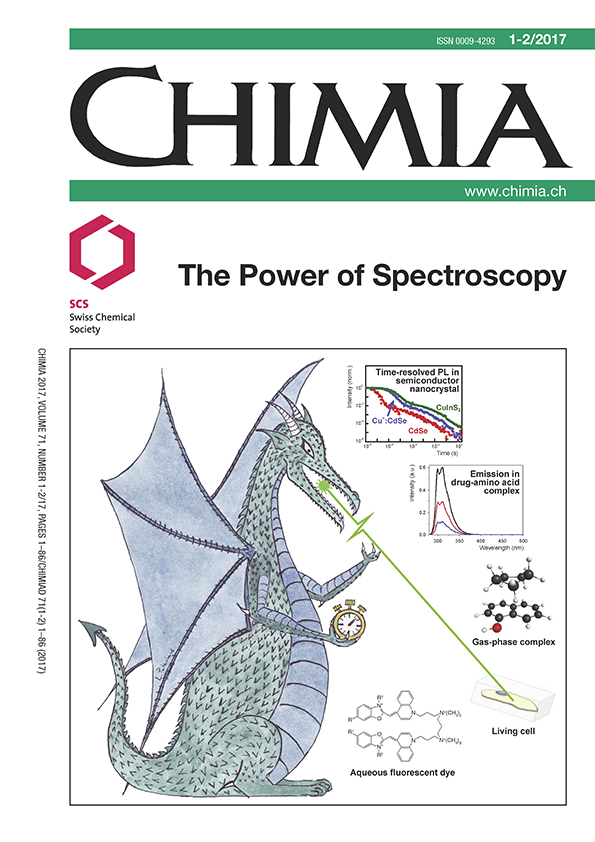Measuring Intermolecular Binding Energies by Laser Spectroscopy
DOI:
https://doi.org/10.2533/chimia.2017.7Keywords:
Dispersive interactions, Hydrogen bonding, Intermolecular interactions, Stimulated emission pumpingAbstract
The ground-state dissociation energy, D0(S0), of isolated intermolecular complexes in the gas phase is a fundamental measure of the interaction strength between the molecules. We have developed a three-laser, triply resonant pump-dump-probe technique to measure dissociation energies of jet-cooled M•S complexes, where M is an aromatic chromophore and S is a closed-shell 'solvent' molecule. Stimulated emission pumping (SEP) via the S0?S1 electronic transition is used to precisely 'warm' the complex by populating high vibrational levels v" of the S0 state. If the deposited energy E(v") is less than D0(S0), the complex remains intact, and is then mass- and isomer-selectively detected by resonant two-photon ionization (R2PI) with a third (probe) laser. If the pumped level is above D0(S0), the hot complex dissociates and the probe signal disappears. Combining the fluorescence or SEP spectrum of the cold complex with the SEP breakoff of the hot complex brackets D0(S0). The UV chromophores 1-naphthol and carbazole were employed; these bind either dispersively via the aromatic rings, or form a hydrogen bond via the -OH or -NH group. Dissociation energies have been measured for dispersively bound complexes with noble gases (Ne, Kr, Ar, Xe), diatomics (N2, CO), alkanes (methane to n-butane), cycloalkanes (cyclopropane to cycloheptane), and unsaturated compounds (ethene, benzene). Hydrogen-bond dissociation energies have been measured for H2O, D2O, methanol, ethanol, ethers (oxirane, oxetane), NH3 and ND3.Downloads
Published
2017-02-22
Issue
Section
Scientific Articles
License
Copyright (c) 2017 Swiss Chemical Society

This work is licensed under a Creative Commons Attribution-NonCommercial 4.0 International License.
How to Cite
[1]
R. Knochenmuss, S. Maity, G. Féraud, S. Leutwyler, Chimia 2017, 71, 7, DOI: 10.2533/chimia.2017.7.







